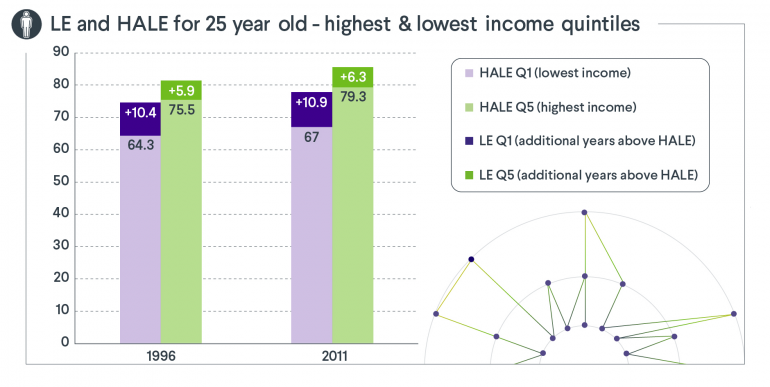Question:
Is the length of time someone is expected to live in good health different for different socio-economic groups?
Answer:
Yes. Results recently published by Statistics Canada in “Socioeconomic disparities in life and health expectancy among the household population in Canada” show that higher socioeconomic groups not only enjoy longer life expectancies, but that they will also spend longer in good health. In addition, both Life Expectancy (LE) and Health Adjusted Life Expectancy1 (HALE) are also increasing more quickly for higher socioeconomic groups.
The charts below show the LE and HALE from age 25, as measured by Statistics Canada based on 1996 and 2011 Canadian Census data for the highest and lowest quintiles by income.


Source: Club Vita presentation of figures provided by Statistics Canada in Socioeconomic disparities in life and health expectancy among the household population of Canada.
Key takeaways
- As expected, Life Expectancy is higher for more affluent people
- Health Adjusted Life Expectancy is also higher for more affluent people
- The difference between LE and HALE is smaller for more affluent people
- The more affluent group has seen higher increases in both LE and HALE between 1996 and 2011, particularly for women.
In summary, more affluent people are expected to live longer, to live longer in good health and for shorter periods in poor health. And the gap between those with the highest and lowest incomes has been increasing over time.
The key questions are:
- How will mortality improvement rates change by socioeconomic status in the future? Continue the observed trend of divergence or start to converge?
- What has happened since 2011?
What do you think?
1Life expectancy adjusted for years spent in poor health, a broad measure for years of life expected to be lived in good health.




